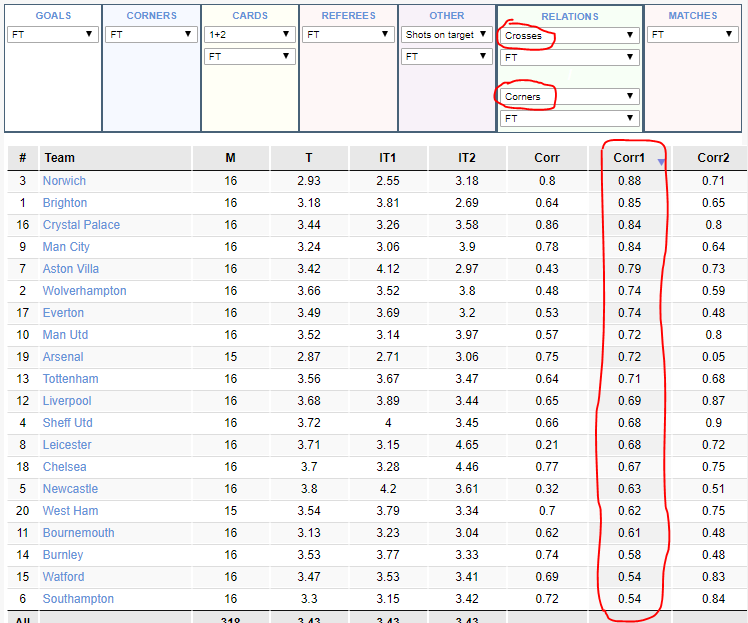Hotline
Hotline


Team
Referee
Compare Teams
Select Tournament
Main
England Spain Germany Italy France Ukraine Russia JapanClub International
World Europe South-america Asia Nc-america Africa OceaniaNational teams
World (National) Europe (National) South America (National) Asia (National) NC America (National) Africa (National) Oceania (National)Europe
Austria Azerbaijan Belarus Belgium Bosnia-herzegovina Bulgaria Croatia Cyprus Czech-republic Denmark Estonia Finland Georgia Greece Hungary Iceland Ireland-republic Israel Kazakhstan Latvia Lithuania Netherlands Northern-ireland Norway Poland Portugal Romania Scotland Serbia Slovakia Slovenia Sweden Switzerland Turkey WalesSouth America
Argentina Bolivia Brazil Chile Colombia Ecuador Paraguay Peru Uruguay VenezuelaAsia
Australia Bahrain China-pr Chinese-taipei Hong-kong India Indonesia Korea-republic Qatar Saudi-arabia Singapore Tajikistan Thailand Turkmenistan United-arab-emiratesNorth Central American and Caribbean
Canada Costa-rica El-salvador Honduras Mexico Nicaragua United-statesAfrica
Algeria Egypt Morocco Nigeria South-africaOceania
New-zealandAnalytics
Among other things, national team matches are also distinguished by a wide range of opponents. That is, a statistically average..
TOP MATCHES
| 19:45 |
|
Rangers FC VS Hibernian Free! |
| 15:30 |
|
Farul Consta VS UTA Arad |
| 17:00 |
|
Fenerbahce VS Konyaspor |
| 17:00 |
|
Sakaryaspor VS Hatayspor |
| 17:30 |
|
Nacional VS CD Tondela |
| 18:45 |
|
Braga VS CD Santa Cla |
| 19:30 |
|
CD Castellón VS Mirandes |
| 19:45 |
|
Roma VS Calcio Como |
A tool for calculating the correlation coefficients of team indicators is implemented on the tournament page
Correlation coefficient - an indicator characterizing the strength of the statistical relationship of two or more random variables.
The values of the correlation coefficient are always in the range from -1 to 1 and are interpreted as follows:
- if the correlation coefficient is close to 1, then a positive correlation is observed between the variables. In other words, there is a high degree of connection between the variables. In this case, if the values of the variable x increase, then the output variable will also increase;
- if the correlation coefficient is close to -1, this means that between the variables there is a strong negative correlation. In other words, the behavior of the output variable will be the opposite of the behavior of the input. If the value of x increases, then y will decrease, and vice versa;
- intermediate values close to 0 will indicate a weak correlation between the variables and, accordingly, a low dependence. In other words, the behavior of the variable x will not completely (or almost completely) affect the behavior of y (and vice versa).
Obviously, if the correlation between the variables is high, then, knowing the behavior of the input variable, it is easier to predict the behavior of the output, and the resulting prediction will be more accurate (they say that the input variable "explains" the output well). The higher the correlation is observed between the variables, the more obvious is the relationship between them, for example, the interdependence between the height and weight of people.
According to popular estimates, the correlation coefficient is considered high (significant) if it is greater than 0.7 (modulo).
Let's look at a few examples of how to use correlation in the analysis of football statistics.
1. Using the example of the English Premier League, we analyze the relationship between crosses and corners. It is logical to assume that there should be a direct relationship between these indicators (positive correlation), because the more a team makes crosses, the greater the probability that the ball will go to the corner. To see the correlation coefficients of the teams, open the Relations tab and select the necessary indicators (the correlation is in the last 3 columns):
Indeed, as can be seen from the screenshot, all teams have a positive correlation coefficient between crosses and corners, but if Norwich has this coefficient of 0.88, then Southampton has only 0.54. That is, if we assume that Norwich will have many crosses in the box in the upcoming match (for example, due to the presence of strong flank players or high forwards in the line-up), then the number of team corners should also be large.



 Braga - CD Santa Clara
Braga - CD Santa Clara
 Mainz - Borussia M'gladbach
Mainz - Borussia M'gladbach Wisła Płock SA - Cracovia Krakow
Wisła Płock SA - Cracovia Krakow
 Athletic Bilbao - Real Madrid
Athletic Bilbao - Real Madrid
 Newcastle - Tottenham
Newcastle - Tottenham Fenerbahce - Galatasaray
Fenerbahce - Galatasaray

